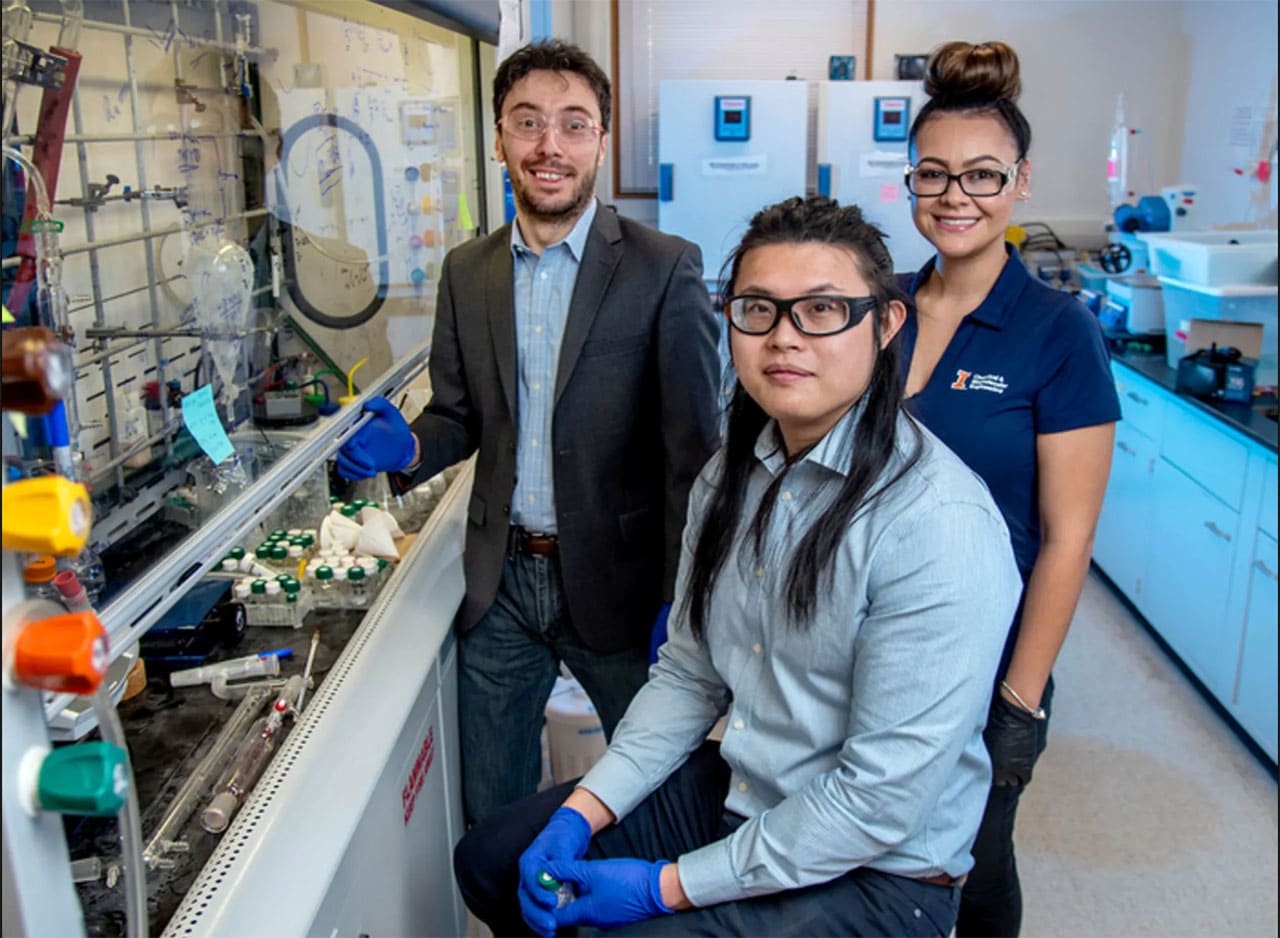
Although polyethylene and polypropylene are by far the world’s largest volume plastics, only a tiny fraction of these energy-rich polyolefins are currently recycled.
To reduce the environmental impact of plastic pollution, researchers from the University of Illinois Urbana-Champaign, University of California, Santa Barbara, and Dow have developed a new upcycling technique that turns one common form of plastic into another.
The breakthrough process transforms the most widely produced plastic – polyethylene (PE) – into the second-most widely produced plastic, polypropylene (PP), which could reduce greenhouse gas emissions.
In a new study, they reported a series of coupled catalytic reactions that transform polyethylene, which makes up 29% of the world’s plastic consumption, into the building block propylene. In a proof-of-concept, the researchers have built a reactor that creates a continuous flow of propylene that can be converted into polypropylene easily using current technology.
A catalyst first removes hydrogen from the polyethylene, creating a reactive location on the chain of molecules. Then the chain is split in two at this location using a second catalyst, which caps the ends using ethylene. And finally, the third catalyst shifts this reactive site along the PE chain so the process can be repeated. This leaves behind a large number of propylene molecules.
“Think of cutting a baguette in half, and then cutting precisely-sized pieces off the end of each half – where the speed at which you cut controls the size of each slice,” said co-lead author Damien Guironnet.
The propylene can then be converted into PP easily using current technology, making this discovery scalable and rapidly implementable. Now the researchers are finding new ways to make the process simple to scale up and improve the efficiency further by designing faster, more productive catalysts.
“Our preliminary analysis suggests that if just 20% of the world’s PE could be recovered and converted via this route, it could represent a potential savings of GHG emissions comparable to taking 3 million cars off the road,” said Garrett Strong, a graduate student associated with the project.
Journal reference:
- Nicholas M. Wang, Garrett Strong, Vanessa DaSilva, Lijun Gao, Rafael Huacuja, Ivan A. Konstantinov, Mari S. Rosen, Alex J. Nett, Sean Ewart, Roland Geyer, Susannah L. Scott, and Damien Guironnet. Chemical recycling of polyethylene by tandem catalytic conversion to propylene. American Chemical Society, 2022; DOI: 10.1021/jacs.2c07781
New upcycling technique turns one common form of plastic into another
Source: Tambay News

0 Comments